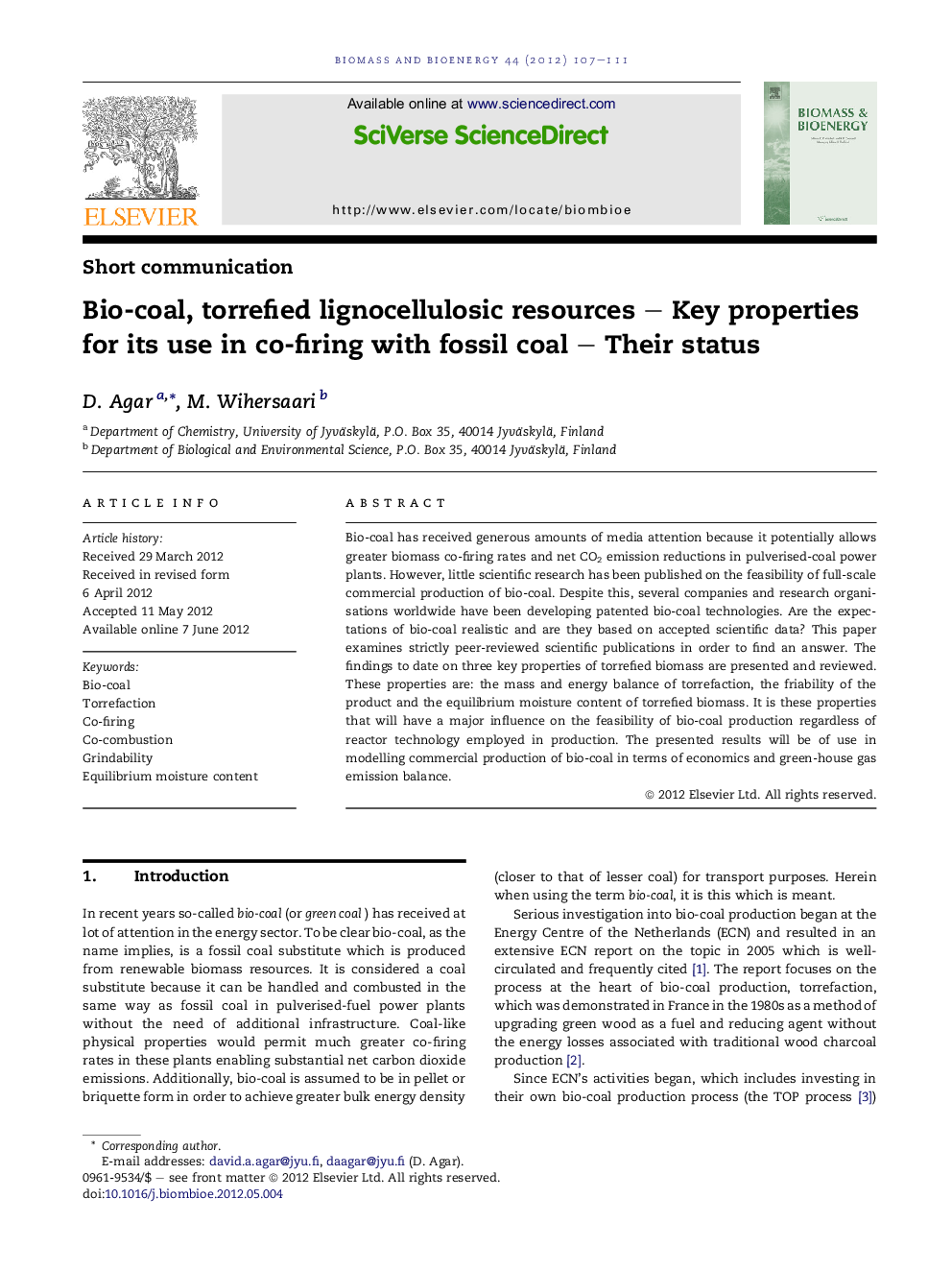| Article ID | Journal | Published Year | Pages | File Type |
|---|---|---|---|---|
| 677324 | Biomass and Bioenergy | 2012 | 5 Pages |
Bio-coal has received generous amounts of media attention because it potentially allows greater biomass co-firing rates and net CO2 emission reductions in pulverised-coal power plants. However, little scientific research has been published on the feasibility of full-scale commercial production of bio-coal. Despite this, several companies and research organisations worldwide have been developing patented bio-coal technologies. Are the expectations of bio-coal realistic and are they based on accepted scientific data? This paper examines strictly peer-reviewed scientific publications in order to find an answer. The findings to date on three key properties of torrefied biomass are presented and reviewed. These properties are: the mass and energy balance of torrefaction, the friability of the product and the equilibrium moisture content of torrefied biomass. It is these properties that will have a major influence on the feasibility of bio-coal production regardless of reactor technology employed in production. The presented results will be of use in modelling commercial production of bio-coal in terms of economics and green-house gas emission balance.
► A technical note on torrefaction research results. ► Presents experimental values on three key properties. ► Mass-energy balance, grindability, equilibrium moisture content of torrefied biomass. ► Results useful for modelling bio-coal production schemes.
